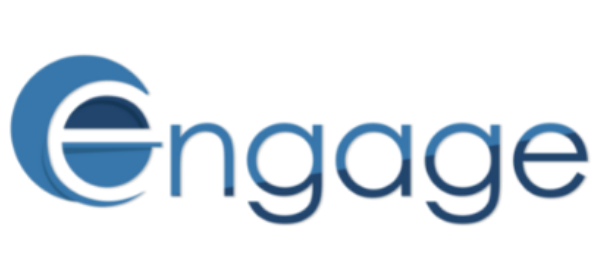Engage Opinion: Health and Safety Reform in NZ – Clarity or Compromise?

Last week, Minister for Workplace Relations and Safety, Brooke van Velden, unveiled the first stage of the government’s plan to reform New Zealand’s Health and Safety at Work Act (HSWA). The changes aim to “cut red tape” and provide clarity for businesses…but as always, the devil is in the detail.
While simplifying compliance sounds a good thing in theory, those of us working at the coalface of health and safety know there’s a fine line between streamlining and sidelining. So, what exactly is changing and what might it mean for businesses and workers alike?
Exemptions for Small, Low-Risk Businesses
The first proposed shift is a lighter regulatory load for small, low-risk businesses. Under the proposed model, these businesses would be expected to focus only on managing critical risks (risks that could cause serious harm or death) and provide “basic” safety facilities like first aid kits and emergency response plans.
This approach aims to reduce the compliance burden on small businesses whose day-to-day operations don’t expose workers to high levels of risk. Instead of being expected to implement complex safety systems, these businesses will be able to take a more streamlined approach, focusing their efforts where it matters most.
Our Engage opinion: In theory, this makes sense. Not every café or accounting firm needs a 20 page risk register or a suite of standard operating procedures. However, defining what is “low risk” can be tricky and if the bar is set too low, we risk “normalising” minimal safety planning, especially in industries where risks are dynamic or poorly understood. Simplification is a worthy goal but it must be paired with clear, evidence-based guidelines and a robust way of assessing when a business qualifies as genuinely low risk.
Shifting Responsibility Away from Governance
Another big ticket change is the clarification that day-to-day safety responsibilities will lie with managers, not directors. Boards, the Minister argues, should focus on governance, not operations.
Our Engage opinion: This change reflects reality in many businesses already but it mustn’t be used as an excuse for directors to disengage. The current HSWA already strikes a balance by requiring “due diligence” from officers, and we think that balance is critical. Strategic oversight isn’t optional in safety, it’s a cornerstone of building a mature safety culture; that culture doesn’t just reduce harm, it also drives results. Businesses with strong safety governance tend to experience fewer disruptions, lower turnover, and higher productivity. When boards treat safety as a performance metric, not just a compliance box – it benefits both people and profits. We need to ensure directors stay actively involved.
A Shift to Industry Led ACOPs
One of the more technical but potentially far-reaching changes in the reform package is the proposal to move toward industry led Approved Codes of Practice (ACOPs). Under the current system, ACOPs are typically developed by WorkSafe or other regulatory bodies “sometimes” in consultation with industry. The proposed shift would hand over primary authorship to the industries themselves, with the intention of making these codes more relevant, adaptable, and grounded in real-world practices.
Our Engage opinion: On paper, this makes a lot of sense. When guidance is written by those closest to the work, it tends to be more practical and better understood. We support a system that empowers industry expertise but only if the process for developing ACOPs is transparent, inclusive, and held to a high standard.
There’s a very real risk that industry led ACOPs could be shaped by the loudest or most powerful voices, particularly in sectors with significant commercial or political clout. Without deliberate checks and balances, these codes could water down expectations rather than lift them.
To be effective, this model must ensure genuine input from:
– Workers and unions
– Health and safety experts
– Cultural representatives
– Small and medium enterprises
If done well though, industry led ACOPs could be the key to developing more flexible safety practices, especially in complex or evolving sectors like logistics and forestry. But if they become a backdoor for deregulation, we could see greater inconsistency, more confusion for businesses, and potentially weaker protections for workers.
It’s a bold move. Let’s make sure it’s also a wise one!
Removing Landowner Liability for Recreational Activities
Another announced change aims to protect landowners from being held responsible when recreational users get injured on their property. Instead, liability would shift to the organiser of the activity (e.g. a hunting guide, tourism operator, or mountain biking club).
Our Engage opinion: This is a welcome clarification that addresses a very real issue, especially for rural landowners, farmers, conservation groups, and others who’ve felt unsure about their responsibilities when allowing public access. Clarifying that the responsibility will rest with the organiser is a practical step that supports all parties involved.
Saying that, it’s one thing to shift the duty of responsibility – it’s another to ensure those inheriting that duty are equipped to manage it well. Many community led groups and tourism operators work with limited resources, so this change needs to be supported by good communications, accessible tools and training, and a fair regulatory approach. We want more people enjoying the outdoors and being safe during activities, not more avoidable harm because the legislation still wasn’t properly understood.
The ‘Cones Hotline’ and Culture Wars in Safety
One announcement that grabbed headlines for all the wrong reasons(!) was the proposal to set up a “cones hotline”, a public channel for people to report over-the-top health and safety practices, such as unnecessary road cones or barriers. While the intent might be to highlight bureaucratic excess, the move risks trivialising a serious issue.
Our Engage opinion: Safety culture is already under fire by many. Framing health and safety as “red tape gone mad” can reinforce the wrong message. If the overall goal of these reform changes is to improve clarity and consistency of the legislation (while keeping people safe from harm at work) then let’s start with better communication, definitions, education and leadership – not with a cones hotline manned by Worksafe!
The Politics of Safety
This reform package is being framed as a response to bring common sense into health and safety rules and as a way to promote productivity, but critics from businesses, unions and safety groups and consultancies are questioning the evidence base for the changes. The NZ Council of Trade Unions (NZCTU) called the reforms “ideologically driven”, warning they may weaken protections rather than enhance clarity.
The reforms come at a time when New Zealand’s workplace fatality rate (1.9 per 100,000) is still significantly higher than Australia’s (1.4) and more than six times higher than the UK’s. That suggests the current issue with safety at work in NZ isn’t overregulation – it’s inconsistent understanding / interpretation, under-resourcing, and cultural gaps in safety ownership. Will the reform package fix that? We’ll wait and see…..
So, where does this leave us?
At Engage, we support any effort to make health and safety more practical, relevant, and effective, but reforms must be grounded in evidence, not ideology. We encourage the government to listen carefully to all stakeholders, especially workers, practitioners, cultural representatives, and those operating in high-risk sectors like transport, manufacturing, and forestry.
Stripping back complexity is good—but not at the cost of clarity, capability, or care…
If you’d like to chat to us about the reform package that is happening or if you would like to take a look at our health and safety software application then contact us today.
